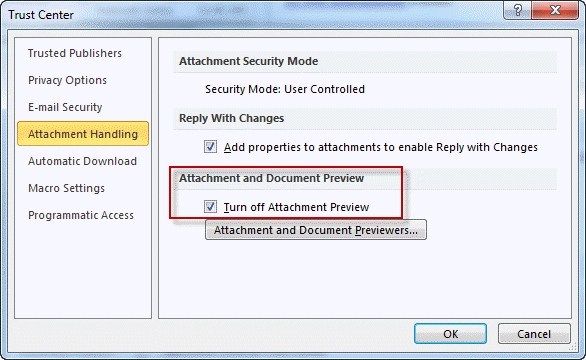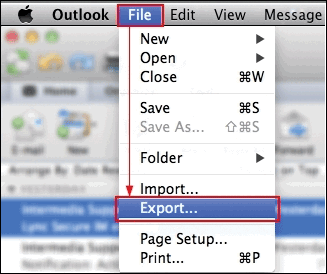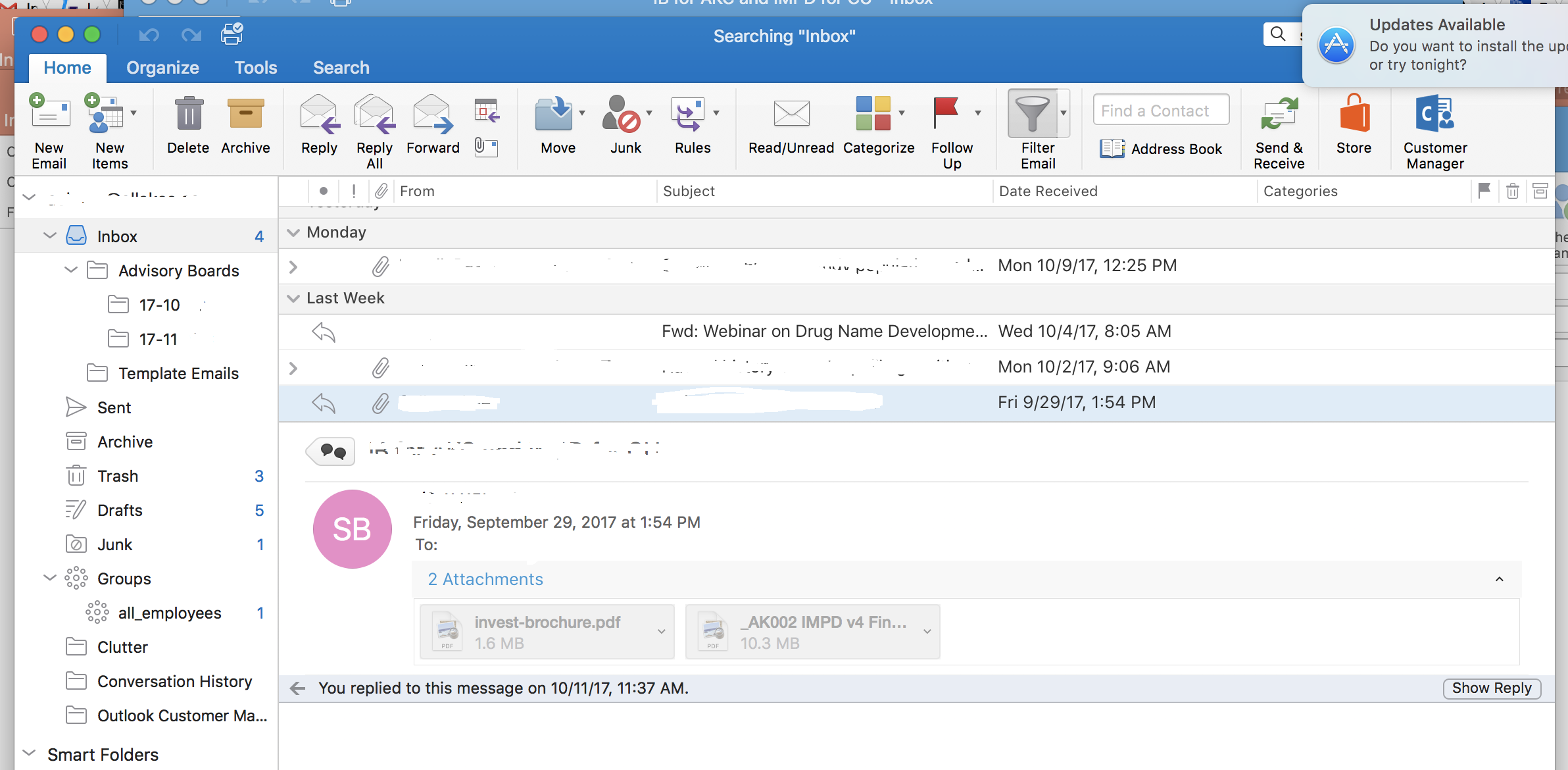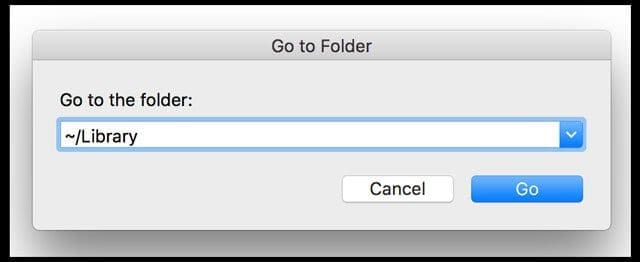Where Is the Temporary File Folder on Mac. It is not easy to find the Mac temporary files location. The Mac itself creates a directory in the /private/var/folder, which indicates that the temporary files' precise location will not be the same as anyone else's. You can still find the folder by follwing the steps below: Go to Finder. In Outlook 2016 for Windows, and Outlook for Mac 2016 or 2019, email messages, contacts, calendar items, tasks, and notes can be exported to archive files. You can import these files (.pst in Outlook for Windows and.olm in Outlook for Mac) into Outlook for Mac.
-->
Important
This article contains information about how to modify the registry. Make sure that you back up the registry before you modify it. Make sure that you know how to restore the registry if a problem occurs. For more information about how to back up, restore, and modify the registry, click the following article number to view the article in the Microsoft Knowledge Base: 322756 How to back up and restore the registry in Windows
Summary
Microsoft Outlook supports the logging of the communications that occur between Outlook and various types of email servers. These logs can be helpful when you troubleshoot problems that affect the transfer of messages between Outlook and the email server.
Outlook can log the communications among Microsoft Exchange, Post Office Protocol version 3 (POP3), Simple Mail Transport Protocol (SMTP), Internet Messaging Access Protocol (IMAP), and Outlook.com servers.

More Information
Warning Serious problems might occur if you modify the registry incorrectly by using Registry Editor or by using another method. These problems might require that you reinstall the operating system. Microsoft cannot guarantee that these problems can be solved. Modify the registry at your own risk.
Outlook 2016 Mac Add Ins
How to enable logging
To have us enable the mail logging option for you, go to the 'Here's an easy fix' section. If you prefer to enable the mail logging option yourself, go to the 'Let me fix it myself' section.
Enable logging
To enable logging, follow the steps for your version of Outlook.
Microsoft Outlook 2019, Microsoft Outlook 2016, Microsoft Outlook 2013, Microsoft Outlook 2010, and Outlook for Office 365
- On the File tab, click Options.
- In the Outlook Options dialog box, click Advanced.
- In the Other section, select the Enable troubleshooting logging (requires restarting Outlook) check box, and then click OK.
- Exit and then restart Outlook.
Microsoft Outlook 2007 and earlier versions
- On the Tools menu, click Options.
- Click the Other tab.
- Click the Advanced Options button.
- Select the Enable mail logging (troubleshooting) check box.
- Click OK to save the setting, and then return to the main Options screen.
- Click OK.
- Exit and then restart Outlook.
Outlook Connector in Outlook 2010
Enable logging
To enable logging for Outlook Connector version 14 in Outlook 2010, configure the following registry data.
- Subkey: HKEY_CURRENT_USERSoftwareMicrosoftOffice14.0OutlookOptionsMail
- DWORD: EnableLogging
- Value: 1
- Subkey: HKEY_CURRENT_USERSoftwareMicrosoftMicrosoft Office Outlook Connector
- DWORD: TracingLevel
- Value: 3
Disable logging
To disable logging for Outlook Connector version 14 in Outlook 2010, configure the following registry data.
Subkey: HKEY_CURRENT_USERSoftwareMicrosoftOffice14.0OutlookOptionsMail
DWORD: EnableLogging
Value: 0
Subkey: HKEY_CURRENT_USERSoftwareMicrosoftMicrosoft Office Outlook Connector
DWORD: TracingLevel
Value: 0
Logging results
When you enable logging, the following registry data is configured.
Subkey: HKEY_CURRENT_USERSoftwareMicrosoftOffice1x.0OutlookOptionsMail

DWORD: EnableLogging
Values: 1 = logging enabled, 0 = logging disabled
Note
In the subkey, <1x.0> represents the program version number ('16.0' = Outlook 2019, Outlook 2016 or Outlook for Office 365, '15.0' = Outlook 2013, '14.0' = Outlook 2010, '12.0' = Outlook 2007).
After you enable logging, all communications that occur between Outlook and the email server are written to a log file.
Important
You must disable logging after the logs capture the failed communication to the server. If you do not disable logging, the logs continue to grow indefinitely.
Log file locations
The log files are formatted as plain text. To find the log files, look in the following locations, depending upon your version of Outlook and also your version of Windows, if you are running Outlook 2007 or an earlier version.

Microsoft Outlook 2019, Outlook 2016, Outlook 2013, Outlook 2010 and Outlook for Office 365
POP3, SMTP, MAPI logs

The POP3, SMTP, and MAPI transport types are written to a single log file in the following location:
%temp%Outlook LoggingOpmlog.log
Note
The Opmlog.log file also contains some information that is related to the Outlook Connector.
IMAP logs
The IMAP transport type is written to the following location:
%temp%Outlook LoggingIMAP-usernamedomainname-date-time.log
For example: IMAP-user1wingtiptoyscom-03_23_2010-12_49_31_798.log
Outlook Connector v. 14 log
The Outlook Connector version 14 log file is written to the following location:
%temp%OLC LoggingOLC-smtp_address-date-time.log
For example: OLC-guidopica@contoso.com-03_23_2010-16_13_10_803.log
For Outlook 2007 and earlier versions
POP3, SMTP, MAPI logs
The POP3, SMTP, and MAPI transport types are written to a single log file in the following locations.
- Windows XP and Windows 2000 C:Documents and Settingslogon nameLocal SettingstempOPMLOG.LOG
- Windows 98, Windows 98 Second Edition, and Windows Millennium Edition (Me) C:WindowstempOPMLOG.LOG
IMAP logs
The IMAP transport type is written to a log file in the following locations.
Windows 2000
C:Documents and Settingslogon nameLocal SettingstempOutlook Logging<NameOfIMAPServer>IMAP0.LOG, IMAP1.LOG, and so on
Windows 98, Windows 98 Second Edition, and Windows Me
C:WindowstempOutlook Logging<NameOfIMAPServer>IMAP0.LOG, IMAP1.LOG, and so on
Outlook.com logs
Temporary Files Outlook 2016 For Mac Osx
The Outlook.com log file is written to the following locations.
Windows 2000
C:Documents and Settingslogon nameLocal SettingstempOutlook LoggingHotmailHotmail0.LOG, Hotmail1.LOG, and so on
Windows 98, Windows 98 Second Edition, and Windows Me
C:WindowstempOutlook LoggingHotmailHotmail0.LOG, Hotmail1.LOG, and so
Temp Files Outlook 2016
Notes
Temporary Outlook Files Windows 10
- IMAP and Outlook.com accounts generate one log for each Send or Receive action that you perform on these accounts. (The log files are named Hotmail0.LOG, Hotmail1.LOG, etc.)
- If you have multiple Outlook.com accounts configured, the folders in which the logs are stored are named Hotmail, Hotmail 1, Hotmail 2, and so on.
- You may have to close Outlook so that the logs can be written to the log files.